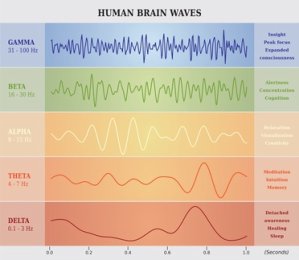Sleep Stages
 Usually sleepers undergo five sleep stages 1, 2, 3, 4 and REM (Rapid Eye Movements). These stages are cyclic, beginning from stage 1 to REM, and then again with phase 1. A complete sleep cycle takes an average of 90 to 110 minutes. The night's first sleep cycle has a relatively short REM period and a longer period of deep sleep, but later that night the REM sleep is extended and the deep sleep period is shortened.
Usually sleepers undergo five sleep stages 1, 2, 3, 4 and REM (Rapid Eye Movements). These stages are cyclic, beginning from stage 1 to REM, and then again with phase 1. A complete sleep cycle takes an average of 90 to 110 minutes. The night's first sleep cycle has a relatively short REM period and a longer period of deep sleep, but later that night the REM sleep is extended and the deep sleep period is shortened.
Stage 1 is light sleep where you drift into and out of sleep and easily can be awakened. At this stage, the eyes move slowly and muscle activity slows. At this stage, many people experience sudden muscle contractions following a sense of falling.
Stage 2 Here the rapid eye movements stops. The brain waves become slower and are only occasional interrupted by rapid brain waves.
Stage 3 is deep sleep characterized by extremely slow brain waves called delta waves interspersed by smaller, faster waves.
Stage 4 is also deep sleep as the brain almost exclusively produces delta waves. It can be very difficult to awaken a person in deep sleep. There is no eye movement or muscle activity. It is in this sleep stage that some children wet the bed or have nightmares.
In the United States phase 3 and 4 have been merged.
REM sleep Here the breathing becomes faster, irregular and shallow, eyes quivering and arm and leg muscles are temporarily paralyzed. Brain waves during this phase rises up to the level where we are awake. Also, heart rate increases, blood pressure rises, men develop erections and the body loses some of the ability to regulate its temperature. It is the time when most dreams occur, and if we are awakened during REM sleep, we can remember our dream. Most people experience 2 to 4 periods of REM sleep each night.
Infants spend almost 50% of their time in REM sleep. Adults spend nearly half of their sleep in Phase 2, about 20% in REM and the remaining 30% is distributed among the other three phases. Older adults spend progressively less time in REM sleep.
Source
http://www.sleepdex.org


